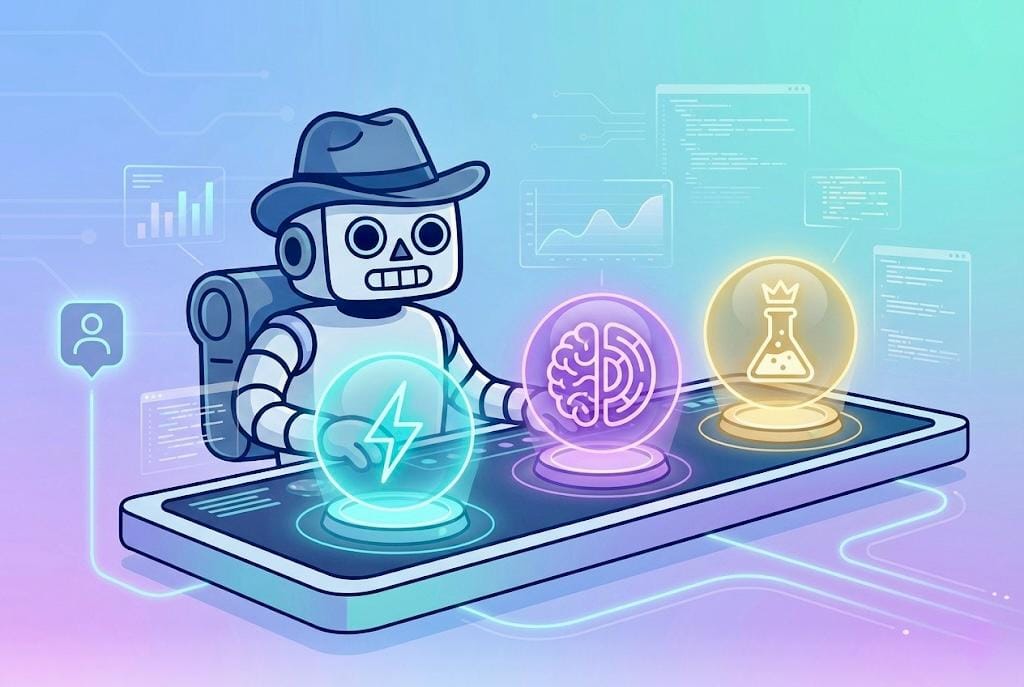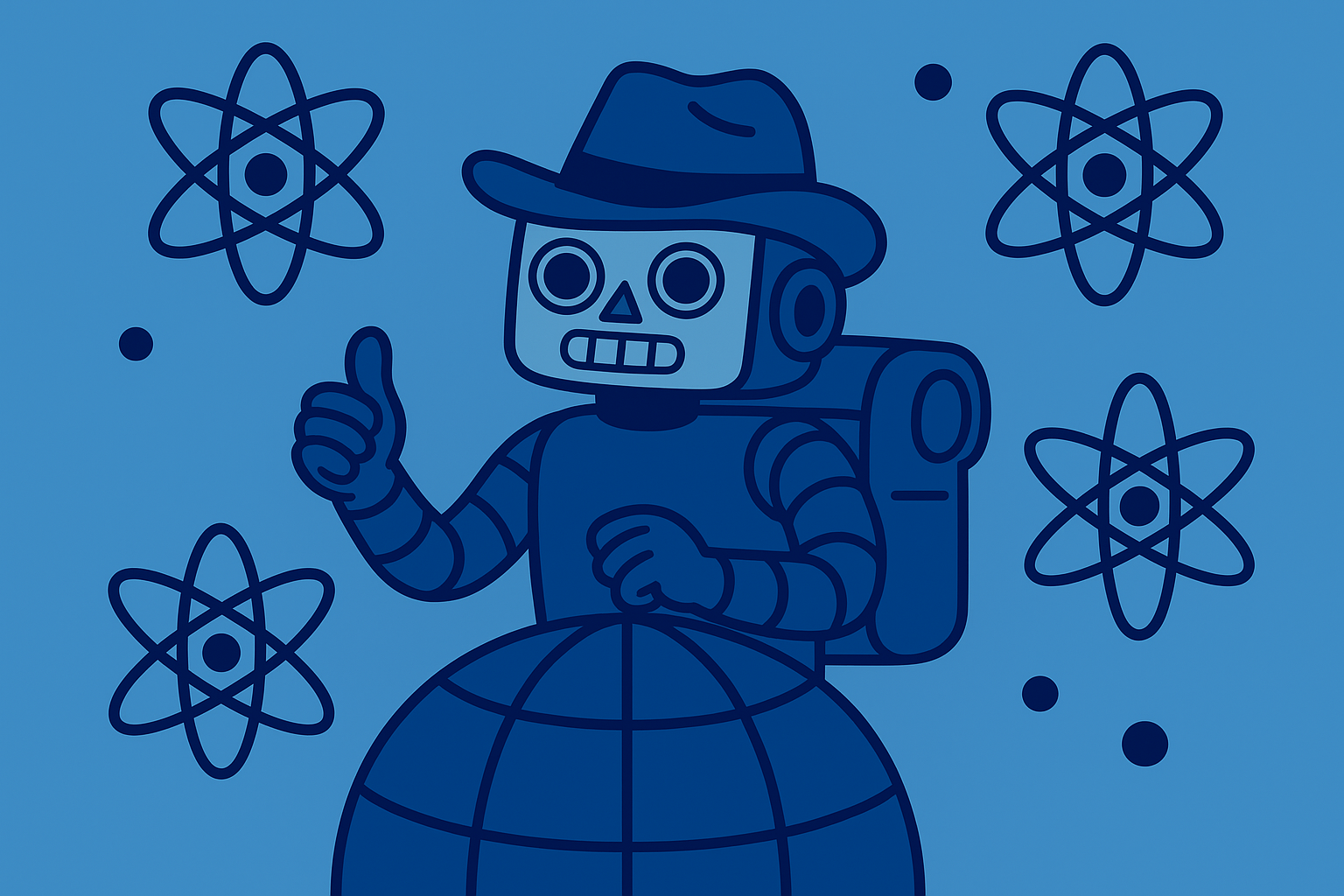The Rise of No-Code AI Agent Builders: Democratizing Intelligent Automation

The tech industry is experiencing a major shift: easy-to-use no-code tools are merging with the expanding power of Artificial Intelligence (AI). This combination is opening the door for anyone—not just programmers—to build advanced AI-driven systems. In this article, we’ll explore how no-code AI agent builders are transforming automation and lowering the barriers to building intelligent applications.
No-code AI agent builders meet the rising demand for accessible AI tools by allowing users to create, customize, and deploy AI agents—no coding required. These platforms give people the ability to build solutions tailored to their work, making AI a tool for everyone, not just engineers.
These platforms offer intuitive visual interfaces and ready-made components, putting advanced automation within reach. Subject matter experts and business professionals can now build digital assistants and process automation tools that, until recently, would have required specialized development teams. The result? Organizations can achieve smarter, more flexible automation than ever before.
No Code, Maximum Control: Try PromptLayer
PromptLayer puts the power of advanced AI agent creation right at your fingertips.
With an intuitive drag-and-drop workflow builder, you can visually design, test, and deploy agents that connect multiple language models, integrate with any data source, and adapt to your unique business needs.
PromptLayer lets you orchestrate complex prompts, add conditional logic, run A/B tests, and manage everything with built-in version control—all in the cloud.
Whether you’re a business leader, subject matter expert, or just getting started with AI automation, PromptLayer’s no-code platform removes barriers and makes sophisticated agent development truly accessible.
1. No-Code AI Agent Builders: The New Standard for Accessible Automation
No-code AI agent builders don’t just simplify software—they redefine it. Anyone can design, launch, and manage AI agents, shifting the power of intelligent automation from a handful of technical specialists to a broad range of users. Instead of relying on traditional developers, organizations can leverage the expertise of employees from every department.
AI agents take automation a step further. Unlike older, rule-based systems, these agents act with autonomy, plan strategically, and learn from data. This leap allows businesses to break free from the limitations of basic automation, opening up new ways to increase productivity and innovate.
2. What Sets AI Agents Apart?
Not all automation tools are created equal. AI agents are software systems designed to pursue defined goals and execute tasks independently. What distinguishes them? Their intelligence, decision-making ability, and adaptability.
Key Characteristics of AI Agents:
- Autonomy: They make decisions and take action without constant human input.
- Reasoning: AI agents use logic and context to solve problems, not just follow scripts.
- Planning: They identify steps and evaluate options to achieve their objectives.
- Learning: Performance improves over time as they learn from new data and feedback.
- Memory: They keep track of relevant information to enhance context and accuracy.
- Multimodal Abilities: These agents process text, audio, images, and even code.
AI Agents vs. AI Assistants vs. Bots
| Feature | AI Agent | AI Assistant | Bot |
|---|---|---|---|
| Purpose | Acts independently and proactively completes tasks. | Helps users with specific tasks upon request. | Handles simple, repetitive tasks based on rules. |
| Capabilities | Manages complex workflows and adapts over time. | Responds to questions and performs basic tasks. | Executes pre-defined commands; minimal learning. |
| Interaction | Proactive and goal-driven. | Reactive; waits for user input. | Reactive to triggers or specific instructions. |
| Autonomy | High: operates with little to no user oversight. | Moderate: needs user input. | Low: follows strict programming. |
| Complexity | Handles complex and changing situations. | Suited for straightforward, routine tasks. | Limited to simple, predictable tasks. |
| Learning | Often improves through machine learning. | May have some learning features. | Rarely learns; usually static. |
This shift—where AI becomes an active decision-maker, not just a tool—marks a new chapter for automation. The key? AI agents can interpret and use different types of information at once, which means they understand their work environment in greater depth.
3. Why No-Code Matters: Making AI Development Truly Open
No-code platforms have changed who can build software. Now, anyone with a good idea and some determination can assemble applications using visual programming tools. That same accessibility is coming to AI development.
Why Teams Use No-Code AI Agent Builders:
- Wider Access: More people can build software, not just engineers.
- Faster Projects: What once took months can now take days or hours.
- Lower Costs: No need to hire large development teams for every project.
- Business Flexibility: Organizations respond faster to change and experiment more.
- Empowerment: Employees closest to the problem can solve it directly.
Common No-Code Platform Features:
- Visual Editors: Drag, drop, and connect logic blocks—no scripts required.
- Reusable Templates: Pre-built workflows and modules save time.
- Automation Tools: Build and automate business processes visually.
- Integration Support: Easily connect to existing software and external APIs.
- Scalability: Deploy solutions across multiple platforms with confidence.
When development accelerates and costs drop, innovation follows. No-code platforms give developers more time for challenging projects, while others across the business can take the lead on everyday solutions.
4. How No-Code AI Agent Builders Work
With no-code AI agent builders, you can create, launch, and manage advanced agents—all without writing a single line of code. These platforms are built for users with a range of technical backgrounds, from business pros to IT experts.
How It Works:
- Visual Interfaces: Build agents by arranging logic blocks on a canvas.
- Reusable Components: Use ready-made modules for triggers, actions, and integrations.
- Simplified Complexity: The technical details—like AI model connections and data processing—are hidden under the hood.
Who Uses These Tools?
- Non-Technical Users: Business leaders and domain experts who want solutions without waiting on IT.
- Developers: Prototype ideas quickly or manage complex agents more efficiently.
Most platforms offer flexibility—a simple drag-and-drop interface to start, with options for advanced logic if needed.
5. The Impact of No-Code AI Agent Builders
No-code AI agent builders have a sweeping impact on organizations and individuals alike.
How They Democratize AI:
- Lower the skill barrier for building AI solutions.
- Expand the pool of people who can create and innovate with AI.
- Accelerate the growth of the AI software market.
Business Benefits:
- Increase agility by making new tools quickly.
- Cut costs on custom software development.
- Boost productivity by automating more complex workflows.
- Enable entirely new uses for AI across departments.
Real-World Examples:
- Customer Support: Chatbots and virtual agents provide instant answers around the clock.
- Marketing: Automated campaigns reach out to customers at the perfect time.
- Logistics: Agents optimize inventory and delivery routes.
- Manufacturing: AI predicts machine maintenance needs and checks quality.
- Healthcare: Virtual assistants handle scheduling, reminders, and even diagnostic help.
- Finance: AI agents fight fraud in real time and assist with trading decisions.
- IT & Security: Automate code tasks and spot security threats quickly.
As these tools take hold, we see a new role emerge: the "citizen AI developer"—experts in their own fields building powerful AI tools themselves.
6. PromptLayer: An Example of No-Code AI Agent Workflows
PromptLayer stands out by letting users create complex AI systems through visual workflows. Its platform enables rapid building, launching, and management of AI agents that can coordinate multiple large language models (LLMs), apply business-specific rules, and interact with external data sources.
Inside PromptLayer Workflows:
- Active Agents: Agents don't just respond—they take initiative. Prompt orchestration means arranging a sequence of prompts for AI models to follow.
- Drag-and-Drop Builder: Place and link nodes on a canvas to define logic.
Key Features:
- Nodes for Everything:
- Prompt Template Node: Calls large language models (LLMs) with custom templates.
- Callback Endpoint Node: Connects to APIs and databases.
- Math Operator Node: Handles calculations and comparisons.
- Parse Value Node: Extracts and processes data.
- Code Execution Node: Insert custom logic when needed.
- Mix and Match Models: Combine multiple AI providers in a single workflow.
- Conditional Logic: Use branching to route actions based on results.
- Versioning: Track changes automatically for both prompts and workflows.
- Testing Tools:
- Interactive Playground: Test any workflow instantly.
- A/B Testing: Compare different approaches.
- Evaluation Pipelines: Batch test and score outputs.
- Deployment and Management: Cloud-based, with programmatic triggers via REST API.
- Debugging and Collaboration: Visualize data flow, troubleshoot quickly, and work with teams across roles.
| Feature Category | Specific Feature | Description & Benefit |
|---|---|---|
| Visual Design | Drag-and-Drop Canvas | Construct agent logic visually; lowers the barrier for complex workflow creation. |
| Data Flow Visualization | Trace data as it moves; speeds up troubleshooting and increases transparency. | |
| Logic & Control | Conditional Edges (Branching Logic) | Dynamic routing for execution paths enables context-aware agents. |
| Code Execution Node | Add custom code for advanced logic or integration needs. | |
| Data & LLM Integration | Prompt Template Node | Send versioned prompts to LLMs; ensures reliability. |
| Callback Endpoint Node | Connect to external APIs for up-to-date information. | |
| Model Mixing | Use the best AI model for each task. | |
| Input/Output Nodes | Define what data goes in and what comes out—supporting multiple outputs. | |
| Testing & Deployment | Version Control | Experiment safely with history and rollback features. |
| Interactive Playground | Rapid workflow testing. | |
| A/B Testing | Optimize with data-driven comparisons. | |
| Evaluation Pipelines | Ensure quality and reliability at scale. | |
| Cloud Deployment & Release Labels | Manage releases without server setup. | |
| REST API for Triggers | Integrate agents with other systems easily. | |
| Collaboration & Mgt. | Team Features | Work together with comments and commit messages. |
| Prompt Management | Centralize and organize prompts for consistency. | |
| Analytics & Monitoring | Monitor costs, usage, and outcomes to optimize performance. |
Examples from PromptLayer Users:
- Gorgias Customer Support Agent: Manages thousands of customer conversations.
- Editorial Assistant: Summarizes news and generates headlines.
- Sales Automation Agent: Personalizes and sends outreach emails at scale.
PromptLayer’s approach brings together user-friendly design with the ability to add custom logic when needed—balancing simplicity with flexibility.
7. The Current State and Future of No-Code AI Agents
The no-code AI agent builder market is expanding rapidly. Major players like Microsoft CoPilot Studio, n8n, AutoGPT, ChatFuel, BotPress, and Google Vertex AI Agent Builder each target different users and use cases, ranging from business professionals to technical teams.
Current Trends:
- Agents are becoming more autonomous and proactive.
- Personalization is advancing—AI agents can tailor actions to individuals.
- Multi-agent systems and collaborative workflows are gaining ground.
- AI agents can now process emotions and multiple data types at once.
- Industry-specific solutions are on the rise.
- Some platforms allow agents to improve themselves over time.
- Natural language instructions are becoming the main way to build agents.
Challenges and Limitations:
- Customization can be limited for very specialized needs.
- Scaling solutions for large businesses may require additional work.
- Integrating with older or complex systems can be tricky.
- Vendor lock-in is a risk.
- Learning curves still exist, especially for advanced features.
- Costs can increase as usage grows.
Ethical Considerations:
- Bias in training data and decision-making remains a concern.
- Transparency and explainability—the so-called "black box" problem—require attention.
- Responsibility and accountability for agent actions must be clear.
- Data privacy and security standards are critical.
- The potential for misuse means governance is essential.
A key paradox is emerging: while no-code platforms aim to simplify AI creation, building powerful, independent agents will always involve some complexity—especially around data, logic, and ethics.
Conclusion
No-code AI agent builders make advanced automation accessible to a much wider audience, fueling rapid innovation across industries. These platforms empower individuals and teams to create, customize, and launch intelligent agents without coding skills. As the technology matures, the challenge will be to keep solutions simple and ethical while unlocking the full potential of AI for everyone.
About PromptLayer
PromptLayer is a prompt management system that helps you iterate on prompts faster — further speeding up the development cycle! Use their prompt CMS to update a prompt, run evaluations, and deploy it to production in minutes. Check them out here. 🍰



